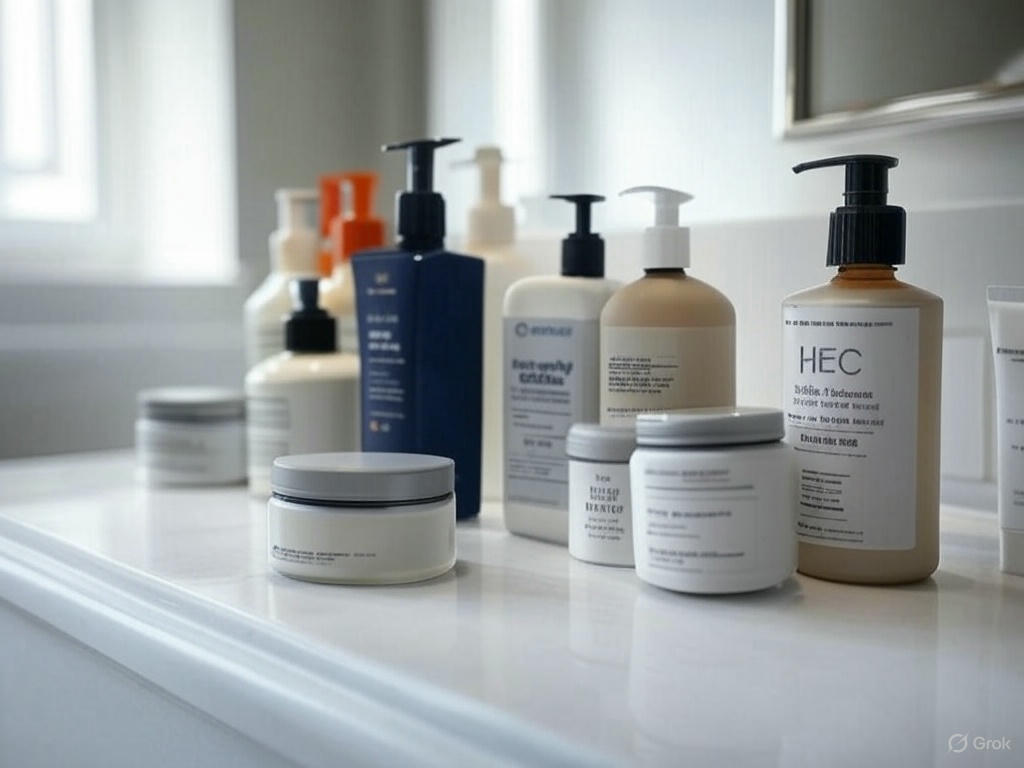Hydroxyethyl Cellulose (HEC) is widely used in the personal care industry due to its excellent thickening, stabilizing, and film-forming properties, which make it a highly functional ingredient in a variety of products. As a water-soluble polymer derived from cellulose, HEC is non-ionic, biodegradable, and gentle, making it ideal for formulations that come into contact with skin, hair, or mucous membranes. Its versatility allows it to enhance the texture, performance, and stability of personal care products, improving both user experience and product shelf life.
In shampoos and conditioners, HEC is commonly employed as a thickening agent to achieve the desired viscosity, giving these products a rich, luxurious feel that consumers associate with quality. It helps suspend active ingredients, such as conditioning agents or anti-dandruff compounds, ensuring they remain evenly distributed throughout the product rather than settling at the bottom. Additionally, HEC’s water-binding capabilities contribute to the hydrating effects of conditioners, helping to smooth and detangle hair by forming a light, protective film around each strand. This film-forming property also enhances hair’s manageability and shine without leaving a heavy or greasy residue.
In skincare products like lotions, creams, and gels, HEC serves a similar thickening and stabilizing role. It provides a smooth, non-sticky consistency that makes these products easy to apply and pleasant to use. For example, in moisturizers, HEC helps maintain a uniform emulsion of oil and water phases, preventing separation and ensuring the product delivers consistent hydration. Its ability to retain water also enhances the moisturizing effect, keeping the skin soft and supple. In gel-based formulations, such as facial cleansers or hand sanitizers, HEC creates a clear, stable gel structure that holds active ingredients—like exfoliants, essential oils, or alcohol—in place while offering a lightweight, non-irritating texture.
HEC is also a key ingredient in toothpastes, where it acts as a binder and thickener to give the paste its characteristic consistency. It helps hold the abrasive particles, fluoride, and flavoring agents together, ensuring the toothpaste stays smooth and cohesive during use. Its water-retention properties prevent the toothpaste from drying out in the tube, while its mildness ensures it’s safe for oral application. Similarly, in mouthwashes, HEC can be used to adjust viscosity and improve the product’s “mouthfeel,” making it more comfortable to swish.
In cosmetics like mascaras, eyeliners, or liquid foundations, HEC contributes to product stability and application precision. For instance, in mascara, it helps create a smooth, clump-free formula that coats lashes evenly, while its film-forming nature enhances durability and resistance to smudging. In foundations, it aids in blending pigments and maintaining a consistent texture, ensuring the makeup applies smoothly and lasts throughout the day.
One of HEC’s standout advantages in personal care is its compatibility with a broad range of ingredients, including surfactants, salts, and acids, without losing effectiveness. Its non-ionic nature minimizes the risk of irritation, making it suitable for sensitive skin or hypoallergenic formulations. Additionally, because it dissolves readily in cold water, HEC simplifies manufacturing processes, reducing energy costs and production time. Its biodegradability and plant-based origin also align with the growing consumer demand for sustainable, eco-friendly personal care products.




